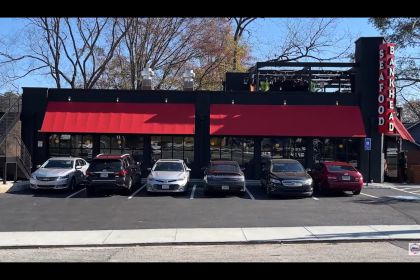The fitness industry has convinced everyone that building serious muscle requires loading barbells with intimidating amounts of weight and grunting your way through sets that make you question your life choices. This heavy-lifting obsession has scared away countless people who could be building impressive muscle with techniques that don’t require risking injury or competing with powerlifters for equipment.
The dirty secret that traditional bodybuilding culture doesn’t want you to discover is that your muscles don’t actually care how much weight you’re lifting. They only care about the stress, tension, and metabolic challenge you create during exercise. You can build significant muscle using lighter weights, bodyweight exercises, and training techniques that focus on time under tension rather than maximum load.
This approach isn’t just for beginners or people recovering from injuries. Advanced athletes and bodybuilders regularly use these methods to break through plateaus, target specific muscle fibers, and build muscle without the joint stress and recovery demands that come with constantly chasing heavier weights.
Your muscles respond to tension not numbers on plates
Muscle growth happens when you create sufficient mechanical tension and metabolic stress in muscle fibers, not when you impress people with how much weight you can move. Light weights moved slowly with perfect form can create the same muscle-building stimulus as heavy weights moved quickly with questionable technique.
Time under tension becomes the crucial variable when you’re working with lighter loads. Slowing down both the lifting and lowering phases of exercises extends the time your muscles spend under stress, triggering the same growth responses that heavy weights typically create through pure load.
The eccentric or lowering phase of movements provides particularly powerful muscle-building benefits that don’t require heavy weights to access. Taking 3-5 seconds to lower weights creates significant muscle damage and metabolic stress that promotes growth regardless of the absolute weight being used.
Partial range of motion techniques allow you to work in strength curves where your muscles are strongest, creating intense contractions with lighter weights. Working in the stretched position of movements provides especially potent growth stimuli even with reduced loads.
Isometric holds at challenging positions during exercises create maximum muscle tension without requiring additional weight. Pausing at the bottom of squats, holding planks, or maintaining challenging positions forces muscles to work intensely with minimal equipment.
High-rep training unlocks different muscle-building pathways
Traditional heavy lifting primarily targets fast-twitch muscle fibers through mechanical tension, but high-repetition training with lighter weights activates slow-twitch fibers and creates muscle growth through different biological pathways that complement heavy lifting adaptations.
Metabolic stress from high-rep training creates the muscle-burning sensation that indicates cellular changes conducive to muscle growth. This metabolic pathway can produce significant muscle development without requiring the joint stress and recovery demands of heavy lifting.
Muscle pump from extended time under tension with lighter weights increases blood flow and nutrient delivery to working muscles while creating cellular swelling that may directly stimulate growth processes. The pump isn’t just for show; it represents active muscle-building physiology.
Lactate accumulation during high-rep training triggers hormonal responses including growth hormone release that supports muscle development and recovery. These systemic effects provide muscle-building benefits beyond just the local stress created in working muscles.
The fatigue patterns from high-rep training teach muscles to maintain force production under metabolic stress, creating functional strength improvements that complement the raw strength gains from heavy lifting approaches.
Bodyweight exercises can build serious muscle mass
Progressive overload doesn’t require adding weight plates. You can increase exercise difficulty through leverage changes, range of motion modifications, tempo adjustments, and exercise progressions that make bodyweight movements incredibly challenging even for advanced trainees.
Single-limb variations of bodyweight exercises dramatically increase difficulty without requiring equipment. Progressing from regular push-ups to single-arm push-ups provides a strength and muscle-building challenge that rivals heavy bench pressing.
Plyometric and explosive bodyweight movements target fast-twitch muscle fibers while building power and muscle mass simultaneously. Jump squats, explosive push-ups, and similar movements create intense muscle activation patterns that promote growth.
Isometric bodyweight holds like planks, wall sits, and handstand holds create maximum muscle tension throughout entire kinetic chains while building functional strength that transfers to daily activities and other exercises.
Complex bodyweight movement patterns engage multiple muscle groups simultaneously while challenging coordination and stability, creating full-body muscle-building workouts that require no equipment beyond your own body.
Resistance bands and light weights become surprisingly effective
Resistance bands provide variable resistance that increases throughout the range of motion, creating unique strength curves that can be more effective than constant-load free weights for certain muscle-building applications.
Band-resisted exercises allow for accommodating resistance training where the load increases as muscles reach stronger positions in their range of motion. This matches natural strength curves better than traditional weights and can provide superior muscle activation.
Combination training using bands with light weights creates dual loading patterns that challenge muscles throughout entire ranges of motion while providing both elastic and gravitational resistance simultaneously.
High-frequency training with light weights and bands allows for more frequent muscle stimulation without the recovery demands of heavy lifting, potentially leading to faster muscle growth through increased training volume.
Pre-exhaustion techniques using bands or light weights before heavier exercises can enhance muscle activation and growth while reducing the absolute loads needed for effective training sessions.
Recovery and nutrition matter more than weight selection
Muscle growth happens during recovery periods between workouts, not during the training sessions themselves. Optimizing sleep, nutrition, and stress management provides more muscle-building benefits than constantly increasing training loads.
Protein synthesis rates determine how effectively your body builds new muscle tissue from training stimuli. Adequate protein intake, timing, and quality become more important than training intensity for maximizing muscle development over time.
Sleep quality directly affects growth hormone release, protein synthesis, and recovery capacity. Getting adequate sleep provides more muscle-building benefits than adding extra training volume or intensity to already sufficient workout programs.
Hydration status affects muscle protein synthesis, nutrient transport, and cellular processes involved in muscle growth. Maintaining proper hydration supports muscle development more effectively than most supplementation strategies.
Stress management prevents cortisol elevation that can interfere with muscle growth and recovery processes. Managing life stress provides muscle-building benefits that complement rather than compete with training efforts.
Smart programming maximizes muscle growth without maximum weights
Circuit training with lighter weights and minimal rest periods creates metabolic challenges that promote muscle growth while providing cardiovascular benefits that heavy lifting programs often lack.
Periodization strategies that cycle between different rep ranges, intensities, and training methods prevent adaptation plateaus while continuously challenging muscles through varied stimuli that don’t require progressively heavier weights.
Muscle confusion through exercise variation, tempo changes, and training method rotation prevents adaptation while maintaining training interest and motivation that supports long-term muscle development.
Frequency distribution allows for more total weekly training volume when using lighter loads and faster recovery methods, potentially providing superior muscle-building stimuli compared to less frequent heavy training sessions.
The key to building muscle without heavy lifting lies in understanding that muscle growth responds to various stimuli beyond just maximum load. By manipulating training variables like time under tension, metabolic stress, training frequency, and exercise selection, you can create effective muscle-building programs that don’t require intimidating weights or expensive gym memberships.
This approach makes muscle building more accessible, sustainable, and enjoyable for people who want to build impressive physiques without the joint stress, injury risk, and recovery demands associated with constantly chasing heavier weights. The most important factor for muscle growth isn’t how much weight you lift, but how consistently and intelligently you apply progressive overload through whatever methods work best for your body, schedule, and preferences.

















